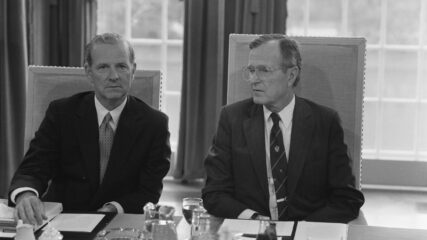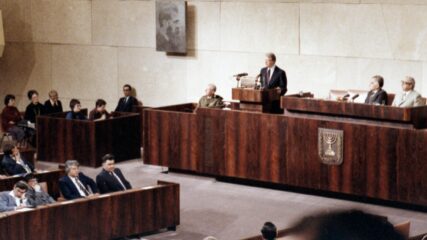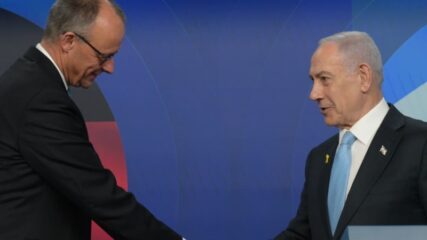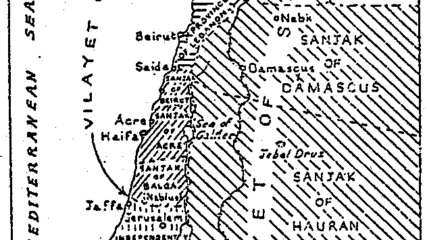Arab forces ambush a medical convoy on route to Hadassah Hospital on Mount Scopus, Jerusalem. The convoy, escorted by two armed Haganah vehicles, is made up of two ambulances, three buses of medical staff and three trucks. Seventy-nine are killed, mostly doctors and nurses. A British military post, only 600 feet away fails to aid the convoy. The attack is part of the first phase of Israel’s 1948 War of Independence.
After the passage of Resolution 181 by the United Nations on November 29, 1947, violence flares up between Arabs and Jews in Palestine as well as against Jews in various cities within Arab countries. Arab leaders in neighboring states, notably Syria and Iraq ramp up rhetoric calling for action in preventing the UN resolution from being carried out, implement recruitment and conscription measures and raise funds for impending action against a future Jewish state.
On December 8, 1947, members of the Arab League meet in Cairo and devise a compromise plan to establish an Arab volunteer army to fight against Jews in Palestine. Many of the Arab leaders are especially wary of Transjordan King Abdullah’s desire to annex Palestine and are therefore opposed to the involvement of their regular armies in the conflict. The Mufti of Jerusalem, Hajj Amin al Husayni, desires to appoint the leader of this force, but the Arab leaders are as wary of him as they are of Abdullah. As a result, Fauzi al-Qawuqji,a former leader in the 1936-1939 Arab Rebellion is appointed to head what would be called the Arab Liberation army (ALA). The tension over who would control a future Palestine, especially between the Mufti and Abdullah as well as the other Arab states will be a continuing issue in developing a coordinated Arab attack plan.
The ALA enters Palestine in January 1948 made up of irregular soldiers from several Arab countries. The ALA targets Haganah forces and focuses on controlling access to villages in order to isolate them from larger Jewish population centers. Despite initial setbacks, including a siege of Jerusalem, the Haganah with newly acquired arms from Czechoslovakia and support from the Irgun and Lehi, begins to have success against the ALA in early April.
Earlier, in March 1948, the Haganah, in an effort to liberate the siege of Jerusalem devises Plan Dalet, whose objective is, “to gain control of the areas of the Hebrew state and defend its borders. It also aims at gaining control of the areas of Jewish settlement and concentration which are located outside the borders [of the Hebrew state] against regular, semi-regular, and small forces operating from bases outside or inside the state….Generally, the aim of this plan is not an operation of occupation outside the borders of the Hebrew state. However, concerning enemy bases lying directly close to the borders which may be used as springboards for infiltration into the territory of the state, these must be temporarily occupied and searched for hostiles according to the above guidelines, and they must then be incorporated into our defensive system until operations cease.”
As part of Plan Dalet, the Haganah focuses on opening up a corridor between Jerusalem and Tel Aviv. During the operation, Irgun and Lehi forces attack the Arab village Deir Yassin outside Jerusalem which the Haganah believe is being used as a base for ALA forces and contains a stockpile of weapons. Arab casualties are high in the battle and the events become a rallying cry for action against Jews. The attack four days later on the Hadassah medical convoy is seen as Arab retaliation for Deir Yassin.
The photo shows an ambulance damaged in the attack on April 13, 1948. Photo Source: Wikimedia Commons.









